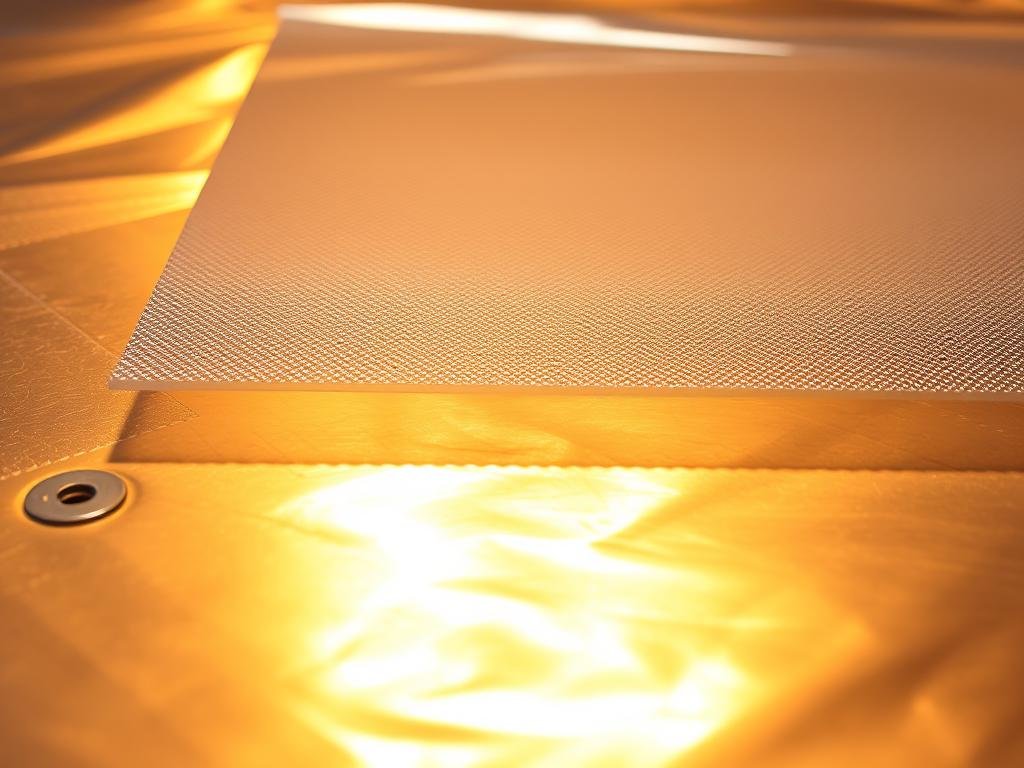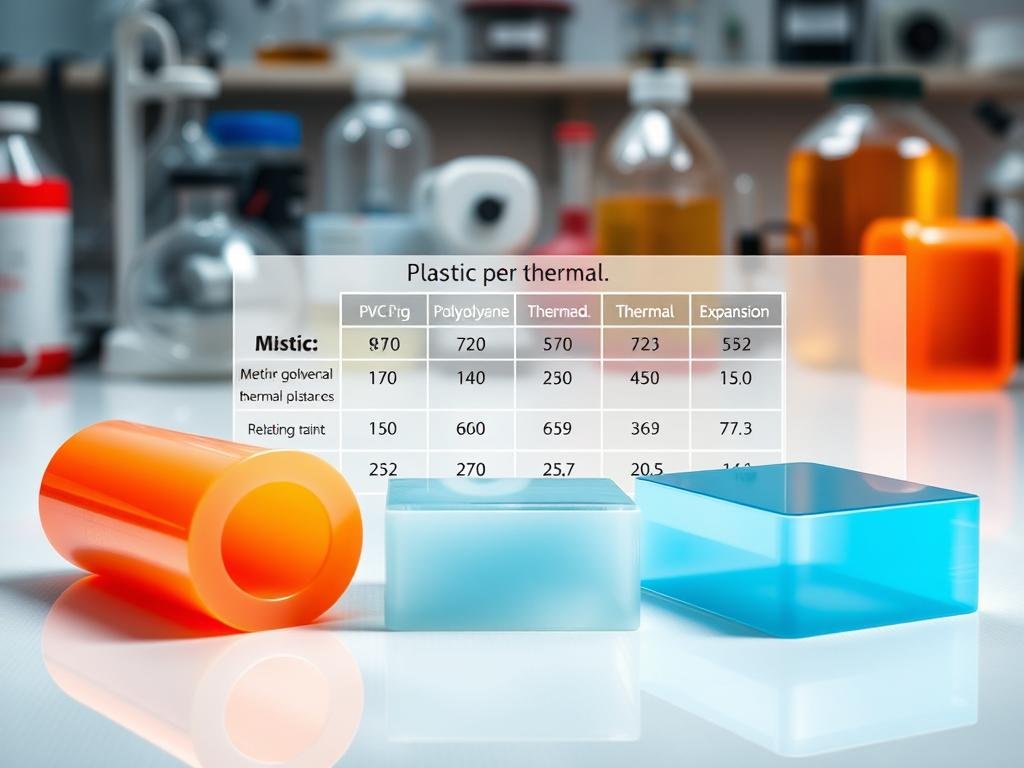Polyvinyl chloride, commonly known as PVC, is a versatile thermoplastic used in various industrial and commercial sectors. Its melting point ranges between 160°C and 210°C, typically around 170°C for vinyl flooring, facilitating effective thermoplastic processing.
This comprehensive guide explores the temperature behavior of PVC, providing essential information for professionals working with this material. Understanding PVC’s unique molecular structure and its thermal properties is crucial for selecting the right material and processing parameters, ensuring the longevity of PVC products in various applications under different heat conditions.
By examining the different types of PVC, including rigid and flexible PVC, and their respective thermal behaviors, readers can make informed decisions about which type is suitable for specific uses.
Understanding PVC: Composition and Basic Properties
To comprehend the melting point of PVC, it’s essential to understand its composition and basic properties. PVC, or Polyvinyl Chloride, is a type of plastic that is widely used due to its versatile properties.
What is Polyvinyl Chloride?
Polyvinyl Chloride, commonly referred to as PVC, is a synthetic polymer made from the polymerization of vinyl chloride monomers. It is a thermoplastic material, meaning it can be melted and reformed multiple times without undergoing significant chemical change. This property makes PVC highly versatile for various applications, from construction materials to medical devices.
Physical and Chemical Properties of PVC
PVC exhibits a range of physical and chemical properties that contribute to its durability and resistance. Its physical properties include a density of 1.35-1.45 g/cm³, tensile strength of 40-50 MPa, and hardness of 80-90 Shore D. These properties contribute to its structural integrity in various applications.
PVC is also known for its exceptional chemical resistance to acids, bases, salts, and many solvents, making it a preferred material for chemical storage and transport applications. Additionally, PVC has electrical insulation properties, durability factors such as resistance to weathering and UV radiation (with proper additives), and relatively low thermal conductivity (0.16-0.19 W/m·K).
The Melting Point of PVC Explained
The thermal properties of PVC, particularly its melting point, play a crucial role in its processing and application. PVC is a versatile material used in a wide range of industries, from construction to medical devices. Understanding its melting behavior is essential for optimizing its use.
Temperature Range for Different PVC Types
The melting point of PVC varies depending on its type and composition. Generally, PVC has a melting point between 100°C to 260°C. Unplasticized PVC (uPVC) tends to have a higher melting point compared to plasticized PVC. The temperature range for different PVC types is influenced by their crystallinity and the presence of additives.
| PVC Type | Melting Point Range (°C) |
|---|---|
| uPVC | 200-260 |
| Plasticized PVC | 100-200 |
Factors Affecting PVC’s Melting Point
Several factors influence PVC’s melting point, including its molecular weight distribution, degree of polymerization, and the presence of additives. The crystallinity of PVC also affects its melting behavior, with higher crystallinity resulting in higher melting temperatures. Additionally, plasticizers lower the melting point by increasing chain mobility.
Other additives, such as stabilizers and fillers, can modify PVC’s thermal properties. The manufacturing process, including thermal treatment and controlled cooling rates, also impacts the final melting characteristics of PVC products.
Rigid vs. Flexible PVC: Thermal Behavior Differences
Understanding the differences in thermal behavior between rigid and flexible PVC is essential for various applications. The distinction between these two forms of PVC is crucial due to their different responses to heat.
uPVC (Unplasticized PVC) Thermal Properties
uPVC, or unplasticized PVC, exhibits high rigidity and resistance to heat distortion. It has a relatively high softening point, typically around 80-85°C. This property makes uPVC suitable for applications requiring dimensional stability under heat, such as in construction and plumbing.
| Property | uPVC |
|---|---|
| Softening Point | 80-85°C |
| Thermal Stability | High |
Plasticized PVC Thermal Characteristics
Plasticized PVC, on the other hand, contains additives that enhance its flexibility. The addition of plasticizers significantly alters its response to heat compared to uPVC. Plasticized PVC typically has a lower softening point, beginning around 50-60°C, but remains flexible at much lower temperatures.
- The type and concentration of plasticizers affect thermal properties, with higher plasticizer content resulting in lower softening temperatures and greater flexibility.
- Plasticized PVC is used in applications such as flexible water hoses, medical tubing, and wire insulation, where resistance to heat while maintaining flexibility is crucial.
“The flexibility of PVC allows hoses to conform to tight bend radii and resist vibration or movement without cracking or leaking.”
The thermal aging behavior of plasticized PVC is also a consideration, as exposure to elevated temperatures over time can lead to plasticizer migration and changes in material properties.
Heat Resistance Capabilities of PVC
Understanding PVC’s thermal properties is essential for ensuring its safe use under different temperature conditions. PVC’s heat resistance capabilities play a significant role in determining its suitability for various applications.
Glass Transition Temperature vs. Melting Point
The glass transition temperature (Tg) of PVC marks the point at which it transitions from a brittle, glassy state to a more flexible, rubbery state. For PVC, this temperature is typically around 80°C to 85°C (176°F to 185°F). Unlike some other polymers, PVC does not have a distinct melting point; instead, it begins to soften and deform as it approaches its decomposition temperature.
Maximum Safe Operating Temperatures
Schedule 40 PVC can generally withstand temperatures up to around 60°C to 65°C (140°F to 149°F) for continuous use. Exceeding these temperatures, especially under high pressure, can lead to pipe bursting and the leaching of harmful substances. For applications involving higher temperatures, such as hot water heaters, materials like CPVC or PEX are more suitable due to their enhanced heat resistance and durability
Specialty PVC formulations like CPVC can safely operate at temperatures up to 95°C (203°F), making them ideal for hot water applications. The interaction between pressure and temperature is critical in PVC applications, as increased pressure reduces the maximum safe operating temperature.
Safety Concerns When PVC is Heated
The safety concerns associated with heated PVC are multifaceted and require careful consideration. When PVC is exposed to high temperatures, it can undergo thermal degradation, leading to the release of harmful substances.
Thermal Degradation Process
Thermal degradation occurs when PVC is heated beyond its recommended temperature range, typically between 170°C and 190°C (338°F to 374°F). If the temperature is too high or the material stays in the barrel for too long, PVC can decompose, releasing hydrochloric acid and leading to black streaks or burnt spots on molded parts.
Potential Hazards and Precautions
The potential hazards associated with heated PVC include the release of hydrogen chloride gas, which can cause severe respiratory irritation and chemical burns. To mitigate these risks, it is essential to implement proper ventilation systems, monitor temperature closely, and use personal protective equipment. Recognizing signs of PVC overheating, such as discoloration or visible fumes, and taking immediate action is crucial. Proper training for personnel working with heated PVC is also vital to ensure they understand the risks and can implement necessary safety protocols.
PVC vs. Other Common Plastics: Thermal Properties Comparison
The comparison of PVC’s thermal properties with other plastics is essential for identifying the most appropriate material for a given application. PVC’s unique characteristics, such as its fire resistance and chemical resistance, make it a preferred choice in various industries.
Comparing PVC with PE, PS, and PP
When comparing PVC with other common plastics like PE (Polyethylene), PS (Polystyrene), and PP (Polypropylene), several factors come into play. PVC generally offers better fire resistance than PE and PP, and it has a higher chemical resistance compared to PS. However, its temperature tolerance is lower than CPVC, limiting its use in high-temperature applications.

When to Choose PVC Over Other Materials
PVC is the optimal material choice for applications where its unique combination of properties is beneficial. For instance, in chemical processing equipment and outdoor building materials, PVC’s resistance to chemicals and weathering makes it superior. Additionally, PVC’s cost-effectiveness and durability make it a preferred choice for long-term infrastructure applications like underground drainage and sewer systems.
- PVC is chosen for its fire resistance and chemical resistance in chemical processing equipment.
- Its durability and cost-effectiveness make it ideal for infrastructure applications.
- For hot water plumbing, materials like CPVC or PEX are more suitable due to their higher temperature resistance.
Applications Where PVC’s Thermal Properties Matter
PVC’s thermal properties play a crucial role in various applications, from construction to industrial uses. The material’s ability to withstand different temperatures affects its performance and durability in various settings.
Construction and Plumbing Applications
In construction and plumbing, PVC is widely used due to its thermal stability and resistance to water. PVC pipes are ideal for water supply systems because they maintain their structural integrity under various temperature conditions. The material’s resistance to temperature fluctuations ensures that it remains durable and leak-free, making it a preferred choice for plumbing applications.
Industrial and Commercial Uses
In industrial settings, PVC’s thermal properties are critical for its use in chemical processing equipment and electrical insulation. PVC’s ability to resist moderate temperatures and maintain its insulating properties makes it suitable for cable jacketing. Additionally, PVC’s thermal stability is beneficial in industrial flooring applications, where it withstands moderate temperature fluctuations and occasional chemical exposure. The manufacturing process also benefits from PVC’s thermal characteristics, as it influences the design and installation of industrial components like valves and tanks.
| Application | Temperature Consideration | Benefit of PVC |
|---|---|---|
| Water Supply Systems | Resistance to temperature fluctuations | Durable and leak-free |
| Chemical Processing Equipment | Adequate temperature resistance | Handles corrosive substances effectively |
| Industrial Flooring | Thermal stability | Durable in environments with moderate temperature fluctuations |
Conclusion: Making Informed Decisions About PVC and Heat
When working with PVC, understanding its thermal properties is crucial for ensuring safety and quality in various applications. PVC’s melting point ranges from 160-210°C, and its glass transition temperature is between 70-90°C. The maximum continuous use temperature for standard PVC formulations is typically 60-65°C.
To make informed decisions about using PVC, consider both the maximum temperatures it will be exposed to and the duration of that exposure. For instance, maintaining a consistent temperature between 170°C and 190°C is ideal for PVC injection molding, as it allows for good flow without risking degradation.
While PVC has limitations in high-temperature environments, its unique combination of properties, including chemical resistance, durability, and cost-effectiveness, makes it an excellent choice for many applications when used within its appropriate temperature range. By understanding PVC’s thermal behavior and adhering to proper temperature control, users can maximize its benefits while minimizing potential hazards.
